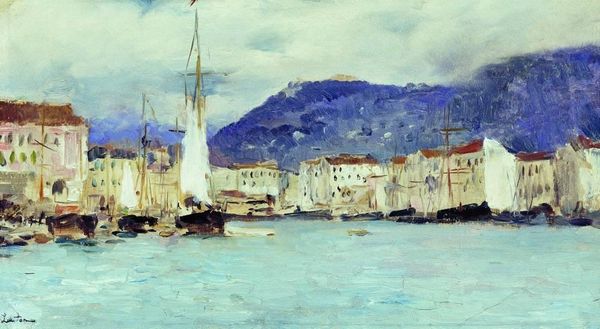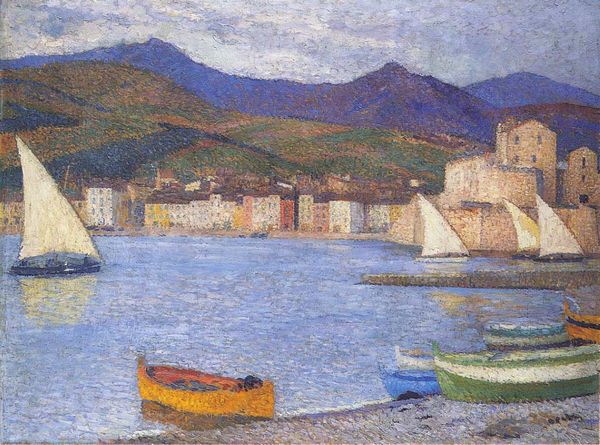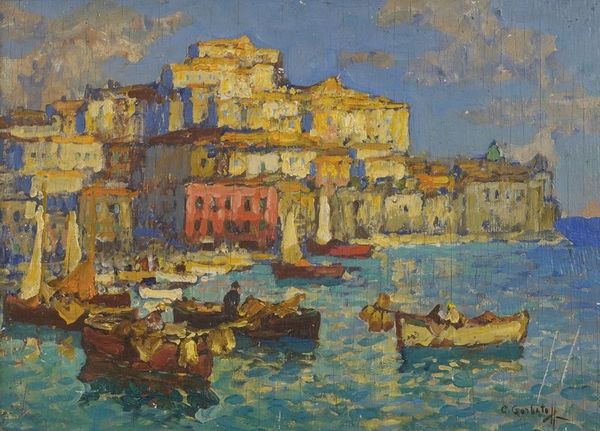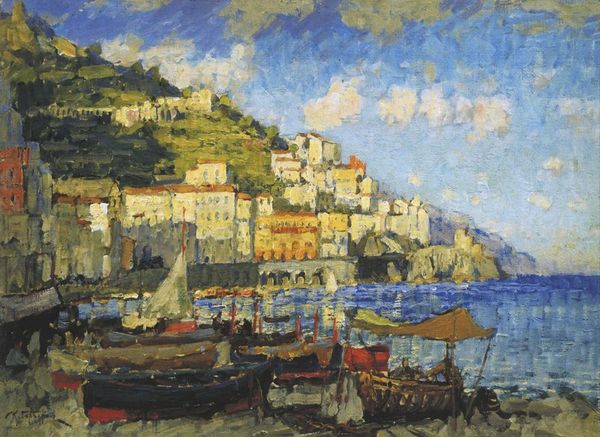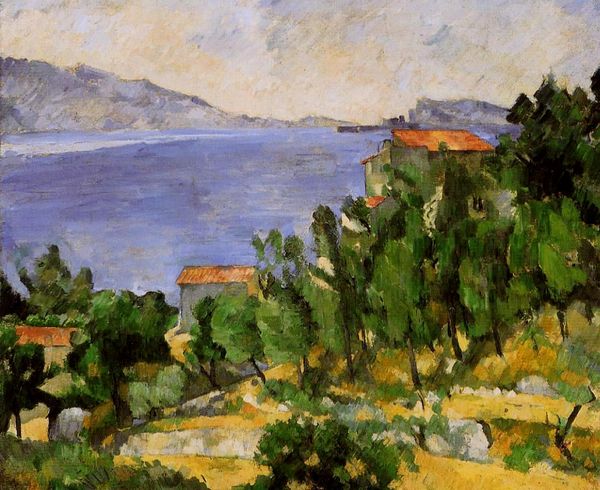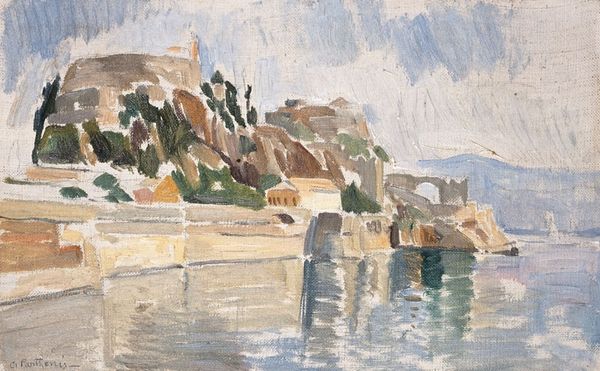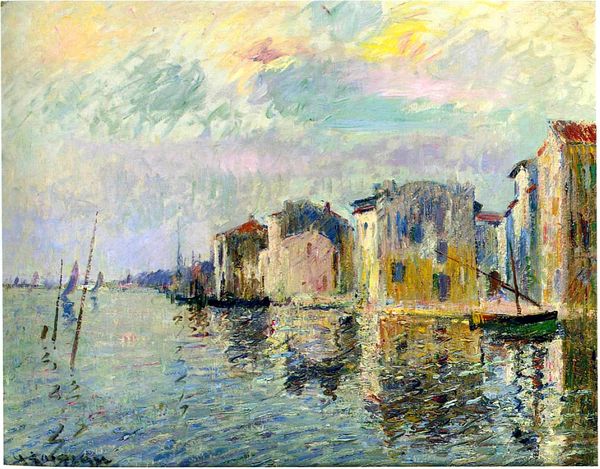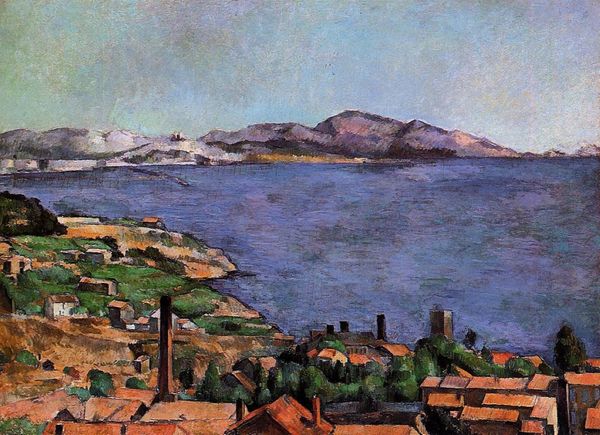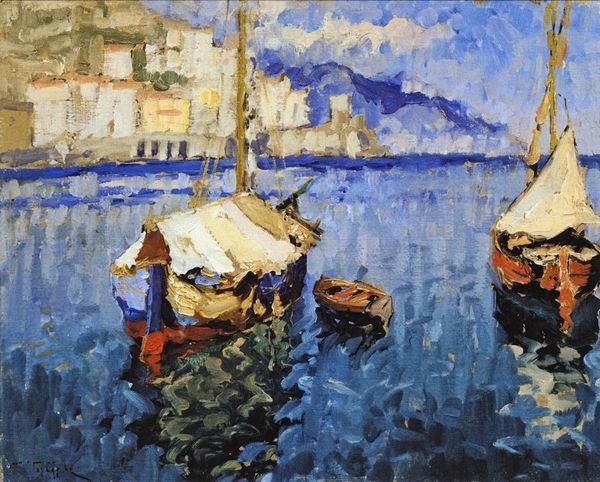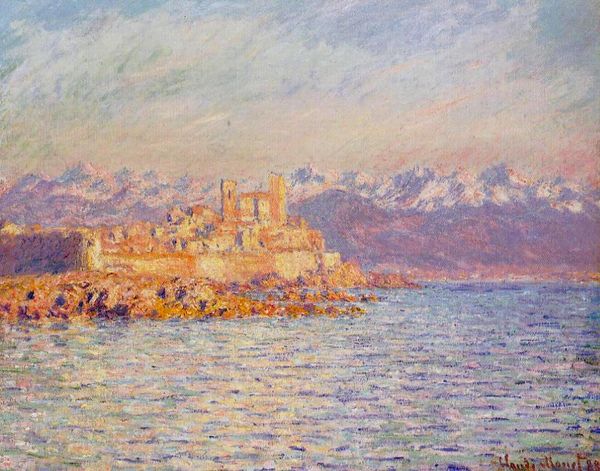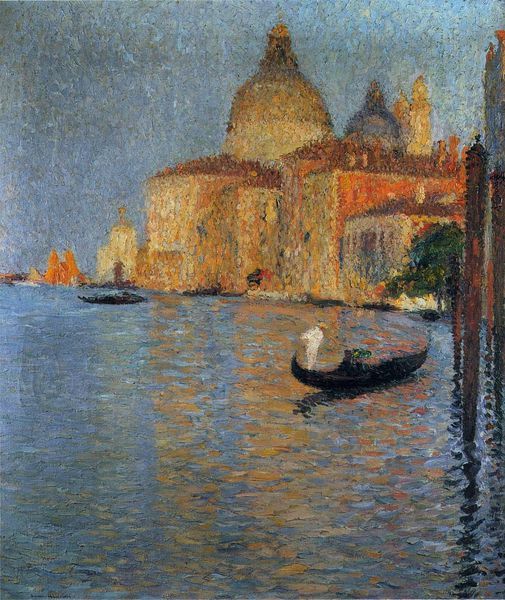
Copyright: Public domain
Editor: Isaac Levitan's "Lake Como," painted in 1894, is striking! The textures created with oil paint gives a tangible sense to the landscape. I'm curious to know, what story do you see embedded in its materiality? Curator: Looking at "Lake Como" through a materialist lens brings the labor of its creation to the forefront. Observe the impasto technique – the thick application of paint. Consider Levitan's process, his choices in selecting and manipulating materials such as the brushes, paints and canvas, these things reflect the social and economic context of art production in the late 19th century. Editor: So, beyond just aesthetic appreciation, we should also consider the physical act of creation? Curator: Exactly! And consider where Levitan was painting. "Plein-air," painting outdoors. How did access to materials and location impact who could participate in creating such paintings? This shifts focus away from solely the artist's genius and towards the systems that supported and constrained artistic creation. Are there any clues in the brushwork here? Is it labored or rushed? Editor: I see a sort of energy in the quick strokes, as if he’s trying to capture the fleeting light, but it must have been physical to stand and work for hours on the water. So, impressionism becomes a study of material and labor too? Curator: Precisely. The work embodies the physicality and socio-economic aspects that contributed to the final piece. Examining the materials and production provides a fresh lens. Editor: That is fascinating! It definitely makes me see the painting and the Impressionist movement as a whole in a new, more grounded light. Curator: Indeed, art is as much about the social world that creates it as the image itself.
Comments
No comments
Be the first to comment and join the conversation on the ultimate creative platform.
